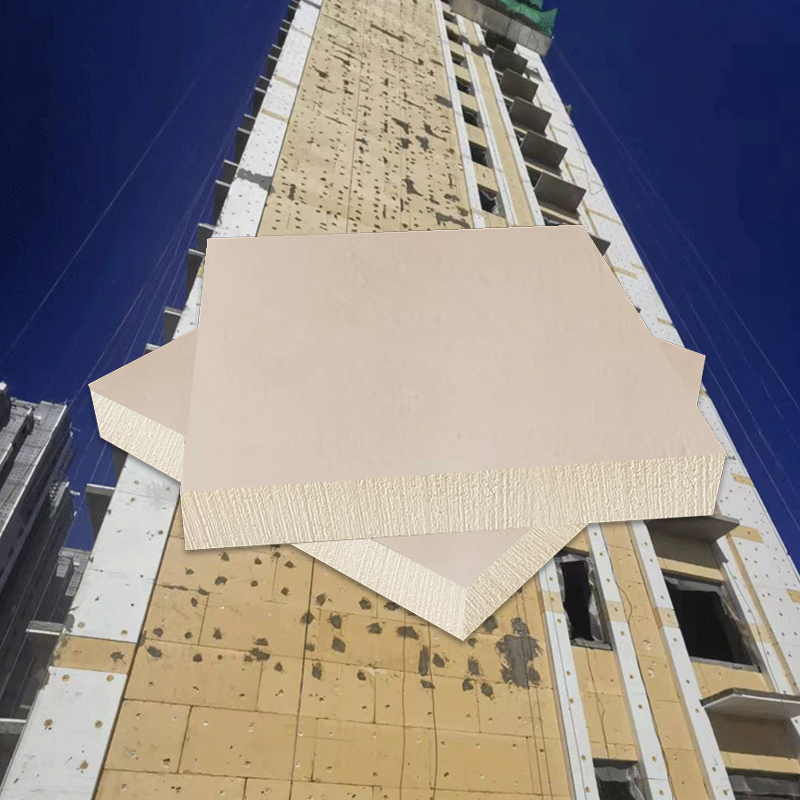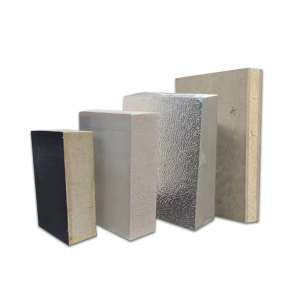Previously, the main fire insulation materials were polystyrene foam and polyurethane foam. However, in some countries, the use of such materials was limited due to the flammability and high temperature resistance in places with strict fire protection requirements. And the government has started to explicitly stipulate that only phenolic insulation boards can be used. The fireproof phenolic insulation board is a foam insulation material comprehensively modified from phenolic resin. So not only is it more suitable for use in building external insulation systems, but it can also effectively solve the problem of powder shedding and reduce water absorption.
Phenolic foam is a kind of high performance material which is more suitable for use in harsh environmental conditions, and has a good development prospect. Other buildings that require fire and insulation requirements, such as steel structure factories, large industrial factories, activity rooms, cold storage rooms, clean workshops, building floors, temporary buildings, sports halls, supermarkets, etc. It is precisely because the most prominent advantage of phenolic insulation board is fire prevention and insulation.
The modified phenolic aldehyde internal and external wall insulation board achieves the effect of external wall insulation and internal wall veneer in one go, and is a very economical, safe, efficient, and energy-saving wall internal and external insulation system.
Application of phenolic foam in building energy conservation
In recent years, phenolic foam has been applied to some major projects and civil buildings, and the demand is increasing year by year. As some traditional foam plastics used for thermal insulation are limited in use, phenolic foam will be widely developed.
Phenolic foam insulation has excellent fireproof performance, low price, safety and light weight, so its application prospect in the construction industry is very attractive. Can be used for wall insulation, non heating basement upper floor insulation, insulated ceilings, various types of house ceilings and partitions, etc. According to the characteristics of phenolic foam, we adopt wet bonding, leaving air layer empty, and covering methods: phenolic foam boards and walls are bonded with inorganic binders with high strength and good water resistance; The cover adopts gypsum materials with high strength, small shrinkage, and high softening coefficient.
Phenolic foam is also the most promising new thermal insulation material among the internationally recognized buildings. Because this new material is fundamentally different from the materials obtained by adding flame retardants to ordinary polymer resins. It does not burn, melt, or emit toxic smoke in fire, and has advantages such as lightweight, non-toxic, corrosion-free, thermal insulation, energy saving, sound insulation, and low cost. It does not require Freon foaming, has no environmental pollution, good processability, and is easy to construct. Its comprehensive performance is unmatched by various insulation materials at present.
Phenolic fire-resistant insulation board has:
1. Excellent fire resistance: Organic insulation materials such as polyurethane and polystyrene can produce thick smoke and highly toxic substances after combustion, which can easily cause death and increase the difficulty of firefighting. The phenolic insulation board is incombustible in case of fire, with the combustion performance up to Class A, the maximum use temperature of 180 (250 ℃ instantaneous is allowed), and the flame resistance of 100mm thick phenolic foam can be more than 1 hour without being penetrated. Under the direct action of the flame, there is carbon deposition, no dripping, no curling and no melting. After the flame burns, a layer of “graphite foam” is formed on the surface, which effectively protects the foam structure in the layer
2. Excellent insulation performance: low thermal conductivity (<0.025W/m) × K. It is more than twice that of polystyrene, similar to polyurethane, and is an excellent material for thermal insulation and insulation;
3. Corrosion resistance and aging resistance: It can resist almost all inorganic acids, organic acids and organic solvents. Long term exposure to sunlight without obvious aging phenomenon, thus possessing good aging resistance;
4. Low density and light weight: The density of phenolic insulation board is below 100 kg/m3, with a minimum of around 40 kg/m3. It can reduce the self weight of buildings, reduce the load on buildings, reduce structural costs, and construction is simple and fast, which can improve work efficiency;
5. Sound absorption performance: phenolic insulation board has excellent sound absorption performance, and the perforated foam structure is more conducive to sound absorption;
6. Environmental protection: Rock wool and glass wool are harmful to the environment and people. When polyurethane and polystyrene are burned and heated, they will decompose into highly toxic gases such as hydrogen cyanide and carbon monoxide. The phenolic insulation board adopts fluorine free foaming technology, fiber free, and meets international environmental protection requirements.
Post time: Oct-20-2023


